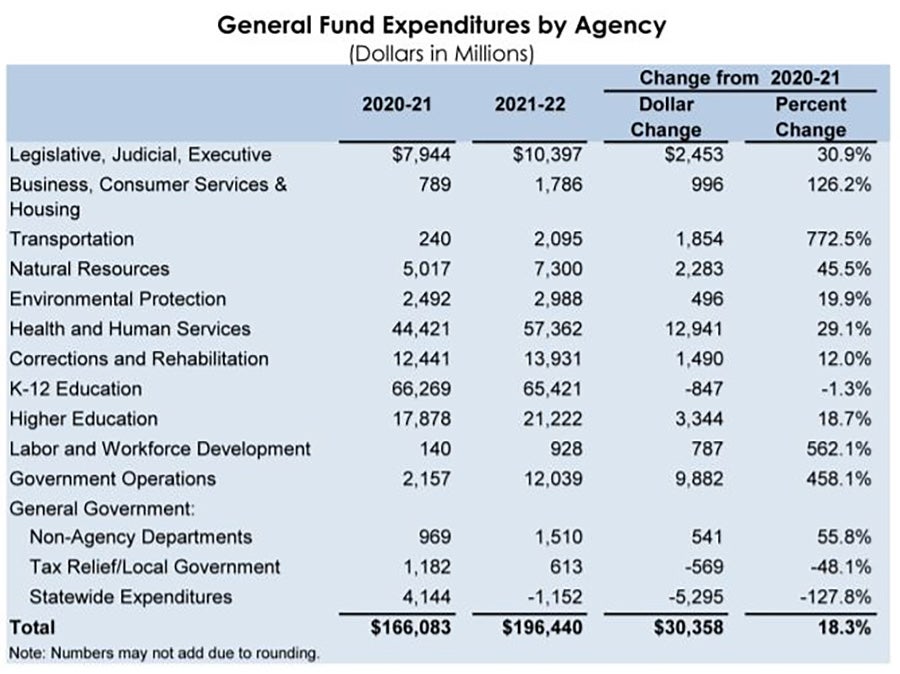California’s History-Making 2021–2022 State Budget: An Overview
State policymakers enacted a balanced budget in June
but have significantly amended it since then with more changes to come
California Governor Gavin Newsom and the state Legislature enacted a $196 billion spending plan for FY 2021–22, the largest budget in state history. Buoyed by a record budget surplus estimated at $85 billion, including $26 billion in nonrecurring federal COVID-19 relief funds, the state’s spending plan is $30 billion larger than in FY 2020–21. Despite record revenues, policymakers continued a decade-long trend of hedging against future economic downturns by allocating 85% of discretionary funding to one-time or short-term spending, increased the state’s available reserves to $25.2 billion and paid down $2.3 billion in unfunded pension debt.
 CA Department of Finance, eBudget Summary, Summary Charts.
CA Department of Finance, eBudget Summary, Summary Charts.
The State Constitution requires the Legislature to pass a balanced budget by June 15 with a June 30 deadline for the Governor to sign or veto the Legislature’s budget. Usually, nearly all budget decisions are settled in time for the July 1 start of the state’s new fiscal year. This year, however, there were many decisions left to be made after the June 30 deadline, some of them because of COVID-19—related uncertainties and others because of the unprecedented revenue surplus—the depth of which was itself uncertain until a few weeks before the budget deadline—leaving little time to deliberate on the many ideas (and few details) presented by the Governor and Legislature for spending more of the windfall in an effort to spur the state’s economic recovery.
As negotiations extended into July, the Governor and the Legislature agreed on spending plans for public education and health care in time for the full Legislature to pass them before its Summer Recess began on July 16.
While some big-ticket items remain unresolved, including spending on climate change and high-speed rail, the Governor and the Legislature have already agreed on spending levels by major program area. This table provides an overview of those spending levels for 2021–22 and compares them to 2020–21 spending.
 CA Department of Finance, eBudget Summary, Summary Charts.
CA Department of Finance, eBudget Summary, Summary Charts.
Overall, the Governor and the Legislature agreed to increase General Fund (i.e., state tax-supported) spending by more than 18% and committed significant new funding to:
- Achieving the largest per-pupil expenditure in state history for K-12 public education
- Expanding Medi-Cal coverage to undocumented adults aged 50 years and older
- Expanding subsidies for child care
- Enabling local governments to combat homelessness
- Extending the state’s eviction moratorium (until September 2021) and providing additional state funding relief for many tenants and landlords
- Expanding broadband infrastructure in the state
Remaining budget items will be taken up when the Legislature returns from its Summer Recess on August 16. The Legislature must act on these items before it adjourns for its 2021 Regular Session on September 10, and Governor Newsom would then have until no later than October 10 to approve or veto the new spending.
